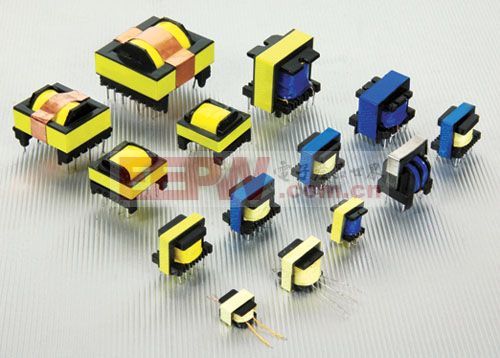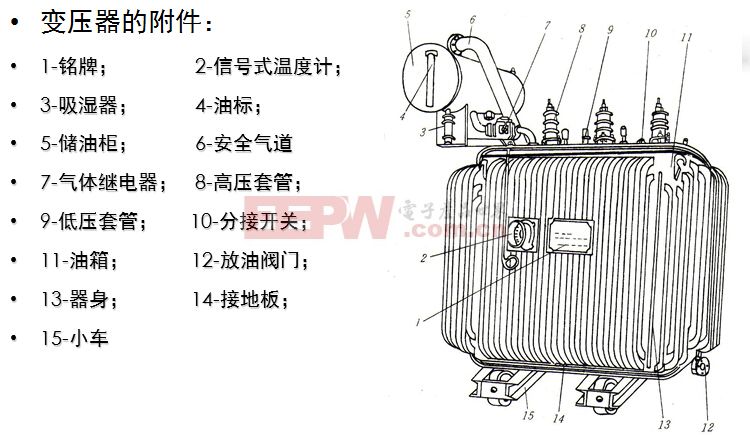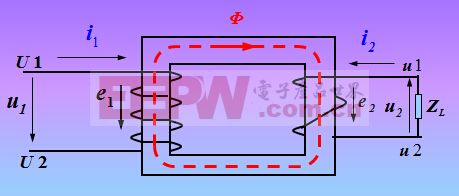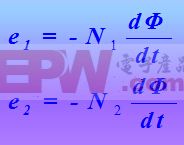Introduction: Electronic transformers are components we are familiar with and essential components for power supplies. Whether it is electronic or not, it has been touched more or less, but if you want to say something about its structure and principle, it is estimated that many people will be confused. This article explains in detail the function, structure and principle of the electronic transformer . Interested students should pay more attention. . .

1. Principle of Electronic Transformer - Introduction
The electronic transformer is also a switching regulator power supply. It is a device that uses the principle of electromagnetic induction to transmit electrical energy or electrical signals. It acts as a step-up, step-down, isolation, rectification, frequency conversion, inversion, impedance matching, inverter, and storage in the electronic circuit. Energy, filtering, etc.
The electronic transformer has the advantages of small size, light weight and low price, and is widely used in various electrical appliances.
The most basic type of electronic transformer is that two sets of coils wound with wires are inductively combined with each other. When an alternating current (having a certain frequency) flows to one of the coils, the other coil will The AC voltage with the same frequency is induced, and the magnitude of the induced voltage depends on the degree of coupling between the two coils and the magnetic flux linkage.

2. Electronic transformer principle - structure
The basic structural components of an electronic transformer are the core and the windings, which form the body of the transformer. In order to improve the heat dissipation condition, the body of the large and medium capacity transformer is immersed in a closed oil tank filled with transformer oil, and the connection between each winding and the external circuit is led out through the insulating sleeve. In order to make the transformer safe and reliable, it also has accessories such as oil conservator, gas relay and safety air passage. To sum up: electronic transformer core, winding, fuel tank, accessories, etc.:
1) The iron core is the magnetic circuit part of the transformer. It consists of a core column (winding on the column) and an iron yoke (connecting the iron core to form a closed magnetic circuit). In order to reduce the eddy current and hysteresis loss, the magnetic circuit guide is improved. Magnetic, the core is made of 0.35mm~0.5mm thick silicon steel sheet coated with insulating varnish and then staggered. The role of the core is to strengthen the magnetic coupling between the two coils. The cross section of the small transformer core is rectangular or square, and the cross section of the large transformer core is stepped, in order to make full use of the space.
2) The winding is the circuit part of the transformer. It is made of copper wire or aluminum wire. The primary and secondary windings are concentrically placed on the iron core column. In order to facilitate the insulation, the low-voltage winding is generally in the middle, and the high-voltage winding is outside, but the large-capacity low-voltage and high-current transformer, in view of the difficulty of the lead-out process, often places the low-voltage winding outside the high-voltage winding.
3) The fuel tank is equipped with the body and transformer oil. In order to facilitate heat dissipation, some of the tank walls are welded with heat pipes. The role of transformer oil is insulation and cooling.
4) The accessories contain a lot of parts, but they are not introduced one by one, as shown in the figure below.

3. Electronic transformer principle - working principle
Although the electronic transformers vary in size and use, their basic structure and working principle are the same. It is made by the principle of electromagnetic induction, and its main function is to transfer electric energy or transmit signals from one circuit to another, which is an important component of electric energy transmission or transmission. The schematic diagram of the electronic transformer is shown below:
The main components of an electronic transformer are a core and two windings that are placed over the core. The two windings are only magnetically coupled and not connected.
system. When the primary winding of the transformer is supplied with an alternating voltage, an alternating magnetic flux is generated in the core, and electromotive forces e1 and e2 are respectively induced in the two windings. According to the law of electromagnetic induction, the instantaneous equation of the electromotive force can be written:

The purpose of changing the voltage can be achieved as long as the following two conditions are met:

1) Flux has a change
2) The number of turns of the primary and secondary windings is different
To put it simply, the working principle of an electronic transformer is the principle of electromagnetic induction, that is, the process of “electromagnetic generation, dynamic magnetic generationâ€.
Through the above introduction, I believe that everyone has a clear understanding of the principle of electronic transformers, but there is still a long distance from the real mastery and proficiency in application. Xiaobian carefully selected four articles on electronic transformers, I hope that everyone can learn and master. . .
Electronic transformer related articles
Corner light ,led Corner light ,Waterproof Corner Light,Bright LED corner light
Kindwin Technology (H.K.) Limited , https://www.szktlled.com